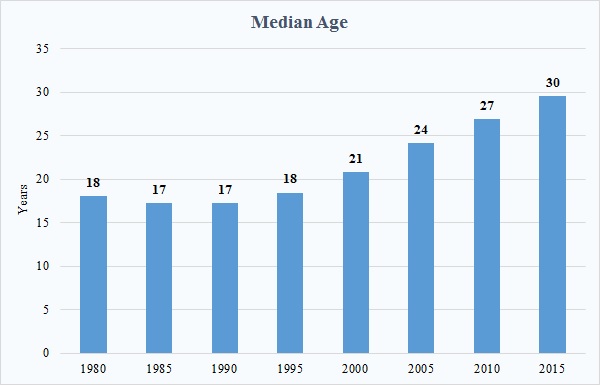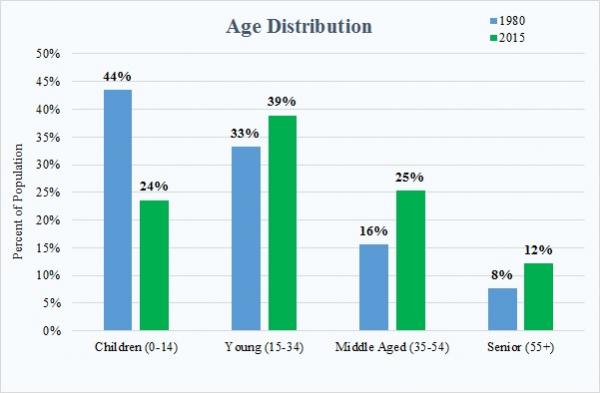Iranian society has undergone dramatic changes since the 1979 revolution. Population has doubled. People are living longer. Cities have swelled due to an influx of people from rural areas. Iran has lowered its population growth rate to a manageable level, winning the United Nations Population Award in 1999 for its achievements in family planning and improving reproductive health.
The Islamic Republic has also worked to improve education for its citizens. Illiteracy has been virtually eradicated while enrollment in primary schools has risen since 1980.
- Population: Nearly doubled since 1980, from 39 million to 79 million people.
- Growth Rate: Dropped significantly from 3.7 percent to about 1.5 percent following the Iran-Iraq War, and has fluctuated only slightly since then.
- Median Age: The median age peaked at 30 years old in 2015, a 12-year increase from the median age of 18 in 1980.
- Age Distribution: There are about half the number of children (0-14 years old) in 2015 than in 1980. The young (15-34), middle aged (35-54), and seniors (55+) make up a greater proportion of the population compared to 1980.
- Urbanization: Percentage of population living in urban areas increased to 73 percent, compared to just half the population in 1980.
- Literacy Rate: Has increased from 37 percent in 1980 to 98 percent in 2015.
- Birth Rate: Declined from a peak of 44 births per thousand people to a low of 18 births per thousand people in 2014.
- Life Expectancy: Iranians in 2014 were living to about 75 years of age – almost twenty years longer than in 1980.
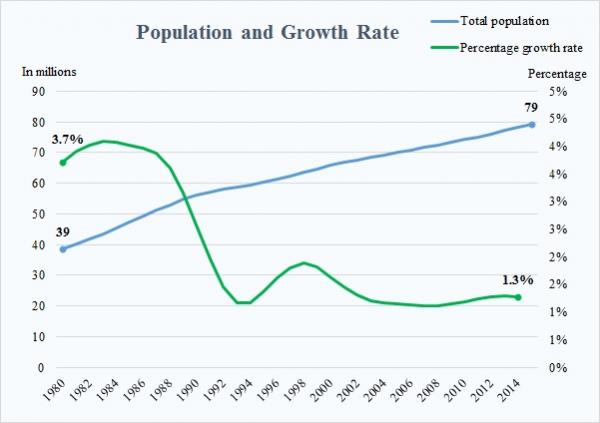

(1980): World Bank; World Bank source: United Nations, World Urbanization Prospects
(2015): CIA World Factbook
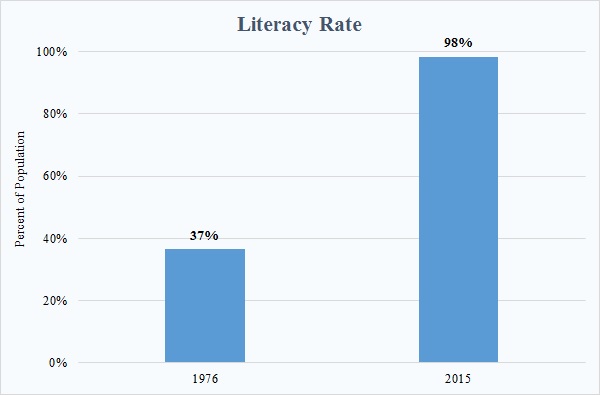
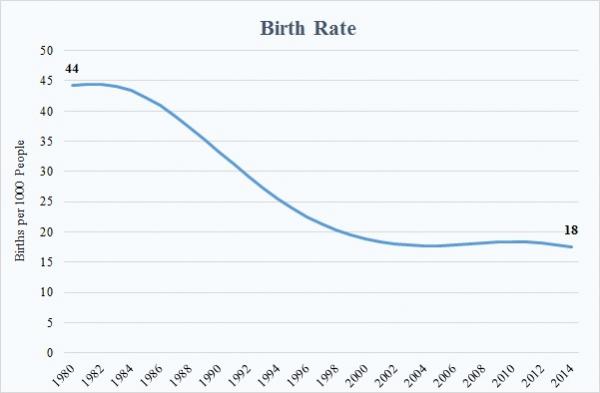
Katayoun Kishi is a research assistant at the U.S. Institute of Peace.

